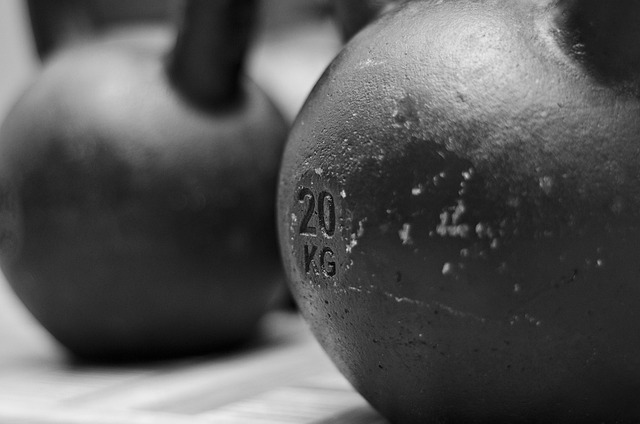In the world of strength training, equipment choice can make a remarkable difference in the results you achieve. Among the most powerful tools for building muscle, bone density, and overall health is the humble yet formidable oversized weight. Unlike traditional dumbbells or kettlebells that come in standard increments, an oversized weight offers a unique combination of mass, stability, and versatility. Its sheer size forces the body to engage stabilizing muscles and core structures more deeply, leading to more efficient movement patterns and stronger joints. The following sections explore how these massive pieces of equipment can be leveraged to produce meaningful gains in strength, mobility, and functional fitness while also maintaining safety and progressive overload.
Understanding the Oversized Weight
The term “oversized weight” refers to any load that significantly exceeds the typical range used in conventional resistance training. Examples include heavy sandbags, weighted vests, large medicine balls, and oversized kettlebells that weigh 50 pounds or more. These weights differ from standard equipment in two key ways:
- Mass Distribution: The weight is often distributed unevenly, forcing the lifter to maintain balance throughout the lift.
- Stability Demand: The large contact area and bulk create a greater demand on the stabilizer muscles, especially in the shoulders, hips, and core.
Because of these attributes, training with oversized weights can improve both strength and proprioception simultaneously, giving athletes a competitive edge and helping general fitness enthusiasts build a solid foundation for everyday activities.
Core Benefits for Health and Fitness
When you incorporate oversized weights into a routine, you’re not just lifting heavy; you’re engaging the entire body. Here’s a quick look at the primary benefits:
- Enhanced Core Stability: The need to keep the torso upright while holding a massive load activates deep core muscles such as the transverse abdominis and multifidus.
- Joint Resilience: Stabilizer muscles surrounding the knees, hips, and shoulders receive additional training, which can reduce the risk of injury during daily movements.
- Bone Density Improvement: The increased load stimulates osteoblast activity, promoting stronger bones—an essential factor for aging populations.
- Metabolic Boost: A heavier stimulus elevates post-exercise oxygen consumption, leading to greater calorie burn even after the workout has finished.
- Functional Transfer: The skills learned with an oversized weight translate well to sports and occupational tasks that require carrying, lifting, or moving heavy objects.
“The biggest advantage of oversized weights is that they teach you how to move the body efficiently and safely, which is something that isolated machines can never replicate.” — Expert Trainer
Training Strategies with Oversized Weights
In order to reap the full potential of these massive tools, it’s important to integrate them thoughtfully into your program. Below are several proven methods to incorporate oversized weights effectively.
1. Full-Body Compound Movements
Begin with classic compound lifts that recruit multiple muscle groups:
- Overhead Squat: Holds the weight above the head while squatting. This movement demands balance, hip mobility, and shoulder stability.
- Goblet Deadlift: A deadlift variant where the weight rests in front of the body, forcing the back and hamstrings to contract powerfully.
- Weighted Carry: Walking or marching while holding the weight. This drill improves grip strength and encourages upright posture.
2. Plyometric Integration
Adding explosiveness to your routine can be surprisingly effective with oversized loads. Examples include:
- Jump Squats with a Weighted Vest: The vest adds resistance to each jump, promoting power and cardiovascular conditioning.
- Medicine Ball Slam: A high-intensity move that engages the upper body, core, and lower body in a single explosive motion.
3. Functional Task Emulation
Many everyday tasks involve lifting or carrying heavy objects. Recreating these motions in the gym can enhance real-life performance:
- Deadlift and Pull: Simulating the act of lifting boxes from the floor.
- Shoulder Press with a Weighted Vest: Mimics carrying groceries or moving furniture.
- Farmer’s Walk with Heavy Sandbags: Improves grip, posture, and cardiovascular endurance.
Safety Considerations
Working with oversized weights demands attention to detail. Here are key safety guidelines:
- Progressive Overload: Start with a manageable weight and increase incrementally to avoid overtaxing the nervous system.
- Proper Form: Always prioritize technique over the amount of weight lifted. Use mirrors or video recordings for self-check.
- Warm-Up: Engage in dynamic stretches and mobility drills targeting the shoulders, hips, and ankles.
- Spotting and Supervision: If possible, have a partner or coach observe the lift, especially during high-intensity sessions.
- Equipment Inspection: Verify that the weight’s handle or strap is secure and that the load is evenly distributed to prevent sudden shifts.
Case Study: 12-Week Transformation
A 35‑year‑old recreational athlete incorporated a 60-pound weighted vest into his routine twice weekly, performing compound lifts and functional carries. Over 12 weeks, he reported a 15% increase in bench press strength, a 12% rise in vertical jump height, and a noticeable improvement in posture during daily tasks such as lifting groceries. Importantly, he experienced no injuries, attributing his success to adherence to progressive overload and proper warm‑up protocols.
Practical Tips for Beginners
Getting started with oversized weights can feel intimidating, but these practical steps can ease the transition:
- Begin with Light Loads: Even a 20‑pound sandbag can teach you how to maintain stability.
- Master the Basics: Focus on body control during simple movements before adding complexity.
- Use a Mirror: Visual feedback helps correct posture and alignment.
- Schedule Rest Days: The heavier the load, the more recovery time your body needs.
- Stay Hydrated: Adequate hydration supports muscle function and prevents cramping.
Common Myths Debunked
1. “Oversized weights are only for advanced lifters.” False. Properly scaled loads can benefit athletes of all levels.
2. “They’re too dangerous to use at home.” With correct form and gradual progression, they’re safe for home gyms.
3. “They’re only good for building muscle.” In reality, they also enhance joint health, balance, and functional performance.
Conclusion
Incorporating oversized weights into a fitness regimen unlocks a multi‑dimensional approach to strength, stability, and functional performance. By focusing on compound movements, plyometrics, and real‑world task emulation, athletes can create a training environment that mirrors the demands of everyday life. The benefits—ranging from increased bone density and joint resilience to improved metabolic health—make oversized weights an indispensable tool for anyone looking to elevate their fitness while protecting their body. Remember to progress gradually, prioritize form, and listen to your body. With these principles in place, you can safely harness the power of oversized weight to achieve lasting health and performance gains.



